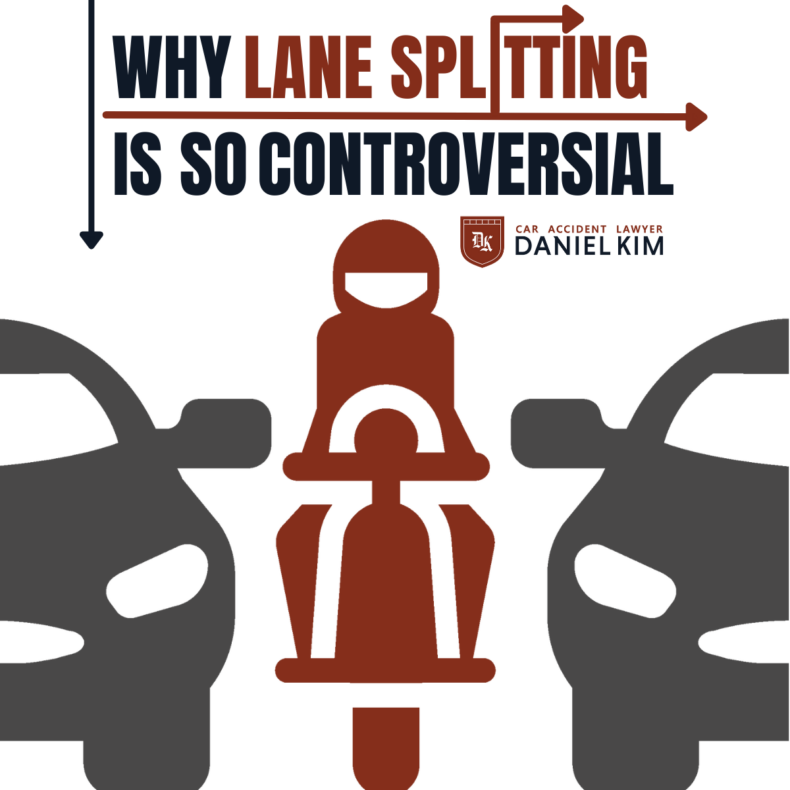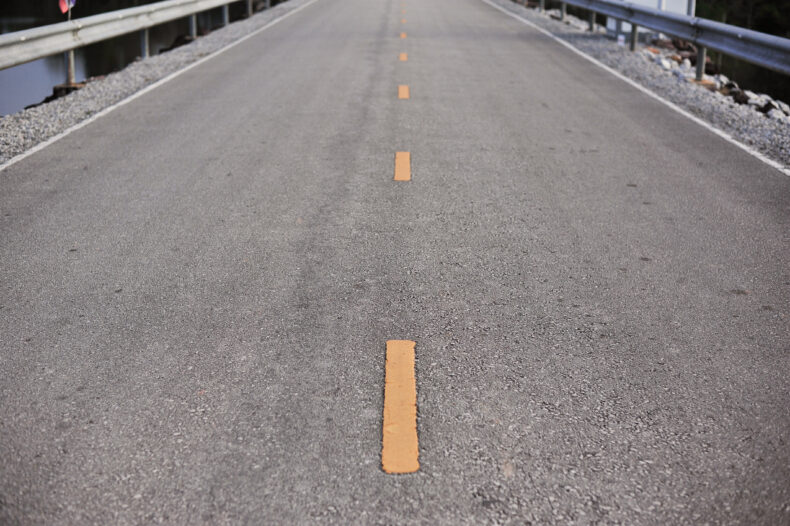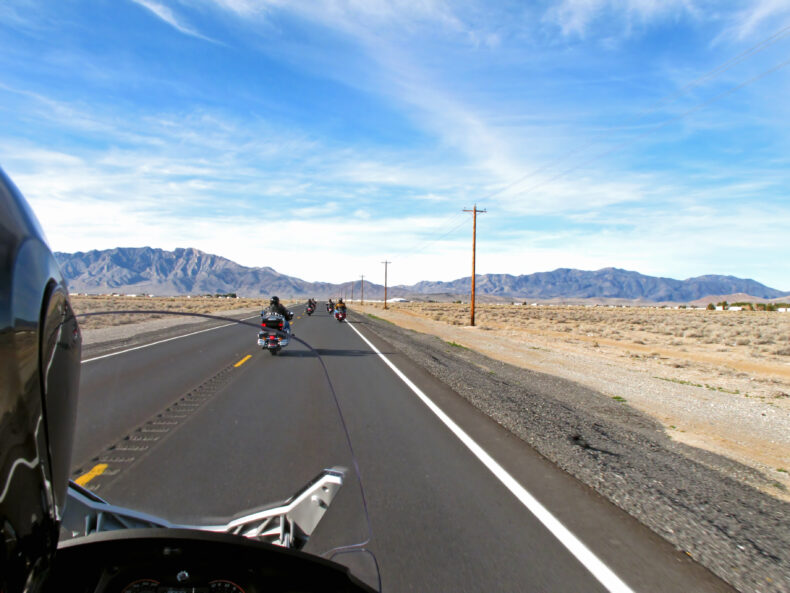Lane Splitting

When it comes to riding a motorcycle in California, there are various laws, rules, and regulations aimed at keeping motorcyclists safe. On one hand, all motorcycle riders and passengers are required to wear a helmet. This universal helmet law is one of the strictest laws in the country, but when it comes to lane splitting, California takes a much more lenient approach. As motorcycle accident attorneys, we are dedicated to protecting injured motorcycle riders who follow the law.
Find out all about motorcycle lane splitting laws, what they mean for motorcycle riders and other drivers, and safety tips.
What is Lane Splitting?
Under California’s lane splitting law, lane splitting is defined as “a motorcycle ridden between rows of stopped or moving vehicles in the same lane including on both divided and undivided streets, roads, or highways.” According to the state’s guidelines, lane splitting should only be done at a maximum speed of 10 mph higher than the surrounding traffic and under safe conditions.
It is important to note that riding on the shoulder is illegal and is not considered lane splitting. Motorcyclists can be ticketed if they don’t lane split responsibly.
Is Lane Splitting Legal in California?
Yes. In 2016, California became the first state to legalize lane splitting. With a population of nearly 40 million, California is the most populous state in the U.S., therefore making it one of the congested states for all kinds of drivers. Lane splitting was originally allowed as a way to help reduce traffic congestion on busy roads and highways.
Several states including Utah, Oregon, Maryland, and Connecticut are considering passing lane splitting laws, but have not done so yet. Most U.S. states do not explicitly outlaw lane splitting, but instead rely on laws to regularly interpret lane splitting as illegal. On the other hand, lane splitting is legal and is a widespread practice across countries in Europe and Asia.
What Is the Difference Between Lane Splitting, Lane Filtering, and Lane Sharing?
Lane splitting, lane filtering, and lane sharing are all terms that are used to describe the practice of a motorcycle traveling between lanes of traffic. While the terms are often used interchangeably, there are some key differences between them.
Lane Splitting
Lane splitting is when a motorcycle travels between lanes of moving traffic in the same direction. California is the only state to make lane splitting legal, but it is illegal in the rest of the U.S. Lane splitting is often done to improve the flow of traffic and to reduce the risk of rear-end collisions and other types of motorcycle accidents.
Lane Filtering
Utah and Oregon have passed laws allowing motorcyclists to practice lane filtering, which is when a motorcycle travels between lanes of stopped or slow-moving traffic. This is most likely to be seen at a red light or in stop-and-go traffic congestion.
Lane Sharing
Lane sharing is the practice of two or more motorcycles traveling side-by-side in the same lane. It is legal in most states, but there are some restrictions. Lane sharing is often done for social reasons or to improve the visibility of motorcycles.
Is Lane Splitting Safe?
Lane splitting has been endorsed by the American Motorcyclist Association as a safe practice. However, it remains a very controversial topic among riders, leading organizations, and lawmakers.
Lane splitting supporters claim the following benefits, including:
- It improves the flow of traffic: When motorcycles split lanes, they take up less space on the road, which can help to reduce traffic congestion and improve traffic flow.
- It reduces the risk of a rear-end collision: Motorcycles are more likely to be rear-ended than other vehicles and suffer serious injuries.
- It enhances motorcycle safety: Lane splitting can help motorcyclists avoid traffic jams and other hot spots for accidents.
However, there are several risks of lane splitting:
- It is dangerous: Lane splitting can be extremely risky if not done safely. Riders should always be aware of their surroundings and should be prepared to stop or slow down if necessary. Since it requires a high level of skill and concentration, lane splitting is not recommended for inexperienced riders.
- It is illegal in most states: Lane splitting is illegal in most states, so riders should check the laws before lane splitting in other states.
- It can be disruptive to other drivers: Some drivers may find lane splitting to be disruptive, so riders should be courteous when lane splitting. Other motorists may also become angry or frustrated by lane splitting, so it is recommended that riders exercise caution to avoid a road rage accident.
Lane Splitting Safety Tips
By following these motorcycle safety tips, you can help to reduce your risk of being involved in a lane splitting accident.
1. Be aware of your surroundings
Before lane splitting, scope out the environment. Consider the width of lanes, the size of surrounding vehicles, as well as current roadway, weather, and lighting conditions. Constantly scan the road ahead and to the sides for potential hazards.
2. Be aware of your speed
The higher the speed, the more danger is involved. Be ready to brake quickly if necessary.
3. Be predictable
Signal your intentions before changing lanes or merging with traffic. Use your horn to alert drivers of your presence.
4. Be visible
Wear brightly colored/reflective protective gear and use high beams during daylight hours.
5. Avoid lane splitting next to large vehicles
These vehicles have large blind spots, and it can be difficult for drivers to see you.
6. Be patient
Don’t rush through traffic. Take your time and be safe.
Contact Our Motorcycle Accident Attorney
Our personal injury law firm in Orange County fights for motorcycle accident victims first. As a defendant’s law firm, we take cases very seriously because we understand the financial, emotional, and physical hardship that victims face after motorcycle accidents. If you have been injured in a motorcycle lane splitting accident, our experienced attorneys will get you the compensation you are entitled to. Contact The Law Offices of Daniel Kim for a free, no-risk consultation at (800) 719-9779 or online.



